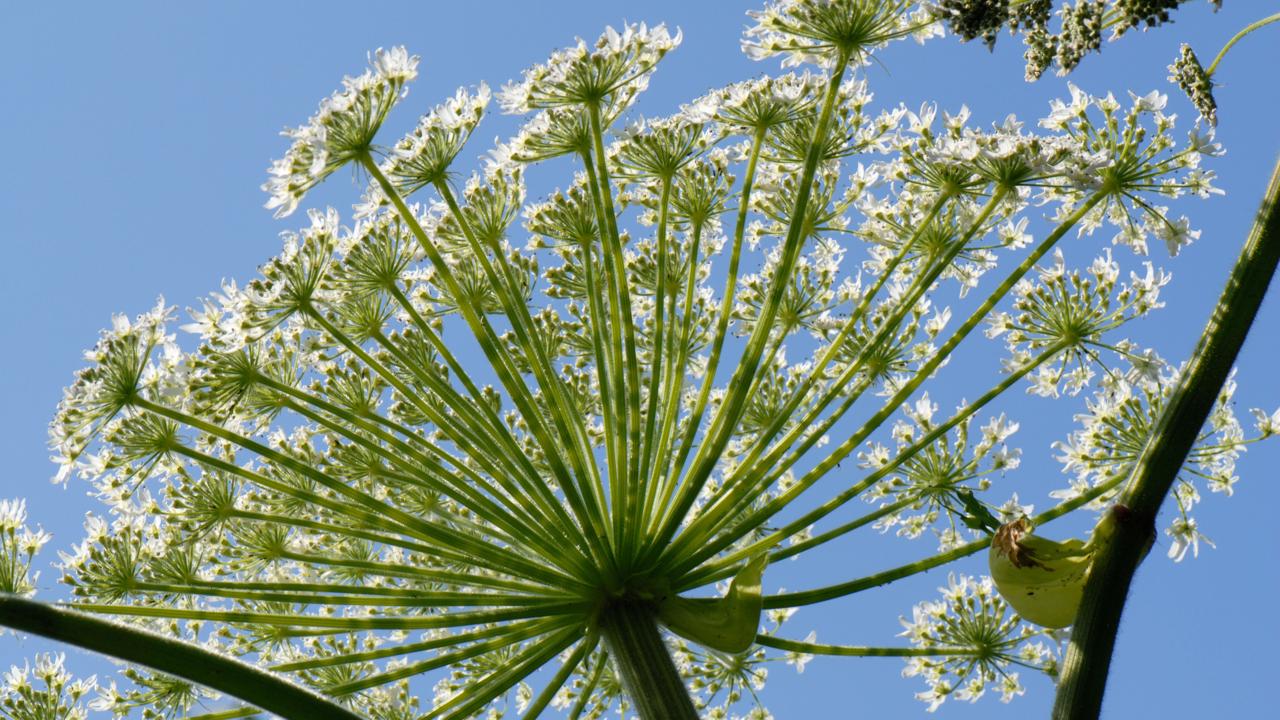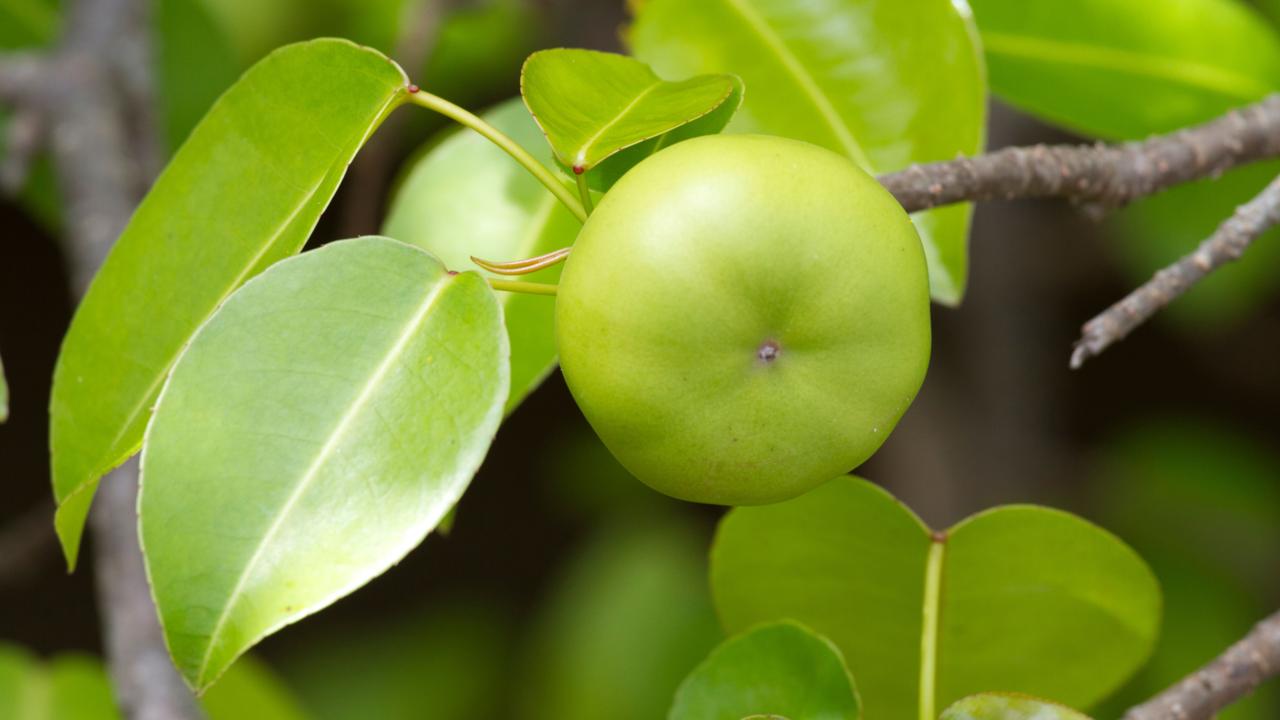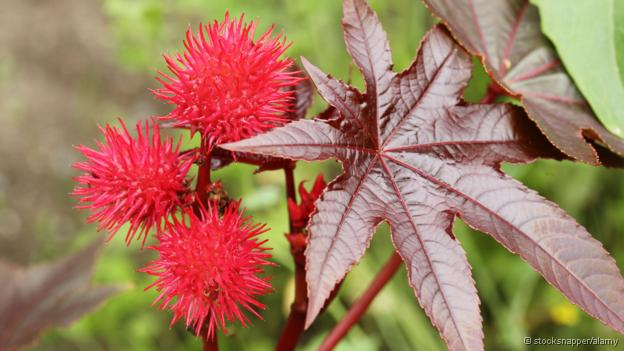地球上那些常见却含剧毒的花草植物
BBC艾拉·戴维斯(Ella Davies)(2023年8月25日)

附子花或舟形乌头
2014 年,英国一座乡间别墅的园丁因多器官功能衰竭神秘死亡。
他的死因至今不明,但聆讯证据表明,毒死他的是毛茛科里一种深受喜爱的开花植物。
这种植物被称为乌头。据说它的花形状就像和尚的袈裟。它还有一些不祥的名字:狼的克星;魔鬼的头盔;毒药女王。
“这种有毒植物还会延缓人的心跳,最后导致人死亡。”
这些名字不止暗示了它的恶名;乌头确实是世界上最致命的植物之一。
它最毒的部分是根,叶子也有毒。它的根和叶子中都含有一种能为皮肤所吸收的神经毒素。中毒的早期症状是接触部位有刺痛感和麻木,如果误食还会导致严重呕吐和腹泻。
2010 年,拉克维尔·辛格(Lakhvir Singh)被判谋杀恋人罪,因为她在恋人的咖喱饭里放了印度乌头。除了能导致严重胃肠不适外,植物中的毒素还会使人心跳减慢,这可能导致死亡。
但不是所有案例都如此不幸。约翰·罗伯森(John Robertson)曾经是看管有毒植物花园的专家,据他说,人体有良好的呕吐反应机制,它能帮助我们逃脱被毒死的厄运。
罗伯森说:“我曾与误食乌头而大难不死的人谈过。那两口子在自家的芳草园里种了乌头,为了让园子看起来更漂亮。有一次,妻子要做色拉,到园里采摘时摘了几片乌头叶子。夫妻俩吃了色拉后受罪不浅,折腾了24小时,不过最后都保住了性命。”

人们被警告要远离大猪草
盛行的理论是,植物中的毒素是一种防御机制。某些植物物种会生成一些化合物用来抵御害虫和其他微生物,而这些化合物对大型动物也有害。
一种叫做光毒性的现象会加剧伤害。人的皮肤接触到植物产生的化合物后,又与日光发生反应,导致难以痊愈的灼伤。这方面最恶名昭彰的是大猪草(又称大叶牛防风),但胡萝卜、芹菜和青柠等“友好的”植物在特定情况下也都可能让皮肤起泡。
在任何天气条件下都不可碰触的植物之一,是号称世界上最危险的树,它就是毒番石榴(又名马疯木),生长在南美洲北部和佛罗里达大沼泽地之间,以及整个加勒比地区。有些地区给它涂上红色十字警示。
“它的西班牙语俗名意为死亡小苹果。”
这种树产生的乳白色汁液含有强刺激物佛波醇。皮肤轻轻擦过都会被严重灼伤。在热带暴雨时如果在这种树下躲雨很可能造成悲剧,因为即使是经雨水稀释的汁液也会造成严重皮疹。
烧毁这种树也是个馊主意。毒番石榴燃烧时产生的烟雾能导致暂时失明严重的呼吸困难。

The fruit of the Manchineel tree (Credit: Stefano Paterna/Alamy)
接触这种热带树虽然会带来这些令人不悦的影响,但不会致命。真正的死亡威胁来自误食其小而圆的果实。它的西班牙语俗名意为死亡小苹果。吃下这种果实将是致命的,它会导致严重呕吐和腹泻,最终使身体严重脱水,回天乏力。
说到不得食用的植物,有一种特别醒目,而且在你身边就可能发现。蓖麻是一种灌木,其心形叶子介于绿色到紫色之间,有着独特的带刺的果壳,因其能为花园添上一抹夏天的色彩而著称。
“受害者会呕吐、腹泻、痉挛,持续达一周时间,最终因器官衰竭而亡。”
蓖麻油来自蓖麻籽,其快速清肠作用为人熟知。但令人不安或者害怕的是,读者可能会从蓖麻的拉丁语学名中发现蓖麻毒素这个令人担忧的关键字。蓖麻也因此赢得世界上最毒植物之名。
带褐色斑点的蓖麻籽中的泻剂蓖麻油被提取后,其残留物中含有一种强力鸡尾酒毒素。蓖麻毒素通过干扰细胞新陈代谢而致命,因为细胞新陈代谢是维持生命的基本化学过程。必不可少的蛋白质生成过程被阻断,就会导致细胞死亡。受害者会呕吐、腹泻、痉挛,持续达一周时间,最终因器官衰竭而亡。
这种毒药的传奇色彩被流行文化不断美化。从阿加莎·克里斯蒂(Agatha Christie)的小说《暗藏杀机之屋 》(The House of Lurking Death)再到现代电视系列剧《绝命毒师》(Breaking Bad),不一而足。尽管虚构描述的戏剧化色彩明显,这东西可憎始终是事实。
另一种相关的毒物是相思豆毒素,它的警示标识更明显。
既然如此,为什么还能在花园里不受限制地种植这些植物呢?

千万不要吃蓖麻籽
约翰·罗伯森表示:“有毒和有害二者是有区别的。要说一种植物有剧毒很容易,理论上讲,只要看看其中含有的毒素及其作用就行。
但是,这种植物是否有害则取决于它被吃下去的可能性多大、接触或进入人体有多容易等因素。”
蓖麻籽的外壳往往很坚硬,如果你整个吞下它,它能够直接通过消化系统,并不会造成致命伤害。成人需要咀嚼并吞下五粒蓖麻籽才够致死剂量,儿童可能一粒就够了。
注射提纯后的蓖麻毒素毒性最强,1978年一名保加利亚持不同政见者就是这么被谋杀的。
相思豆毒素就是这样一种毒素,大多带有明显的警示标签。鸡母珠(相思豆)的种子为椭圆形,外表明亮诱人,往往为红色,并带有一个黑色斑点。它们生长在热带地区,常被用来制作手链、串珠项链或者器物装饰。2011年,英国的热带植物园伊甸园(Eden Project)纪念品商店里都能见到它们。
相思豆毒素与蓖麻毒素类似,但提纯后毒性更强。幸亏相思豆的外壳很硬,往往能阻止其毒素被人体所吸收。在一个案例中,有人摄入用相思豆种子磨成的粉后,及时救治后患者完全康复。

The Castor oil plant Ricinus communis (Credit: Stocksnapper/Alamy)
幸运的是,现代医学时代,由于诊断及时和良好的医护,植物毒素致死案例很罕见。许多植物提取的毒素必须提纯后方可致命。
因此,尽管有些植物可能剧毒,但花园里最危险的也许是对植物一知半解的外行。
(责编:郱书)
Earth’s most poisonous plants
The cause of his death remains unclear, but an inquest heard evidence suggesting he had been killed by a popular flowering plant, a member of the buttercup family.
The plant in question, called Aconitum, has blooms said to resemble monk’s hoods. But the plant is also known by other more sinister names; wolf’s bane, Devil’s helmet and the Queen of Poisons.
"The poison slows the heart which can result in death "
These do more than hint at its villainous reputation. For Aconitum is among the most deadly plants in the world.
The most poisonous part is the roots, though the leaves can pack a punch too. Both contain a neurotoxin that can be absorbed through the skin. Early symptoms of poisoning are tingling and numbness at the point of contact or severe vomiting and diarrhoea if it has been eaten.
In 2010, Lakhvir Singh was convicted of the murder of her lover after dosing his curry with Indian aconite. Apart from causing severe gastrointestinal upset, the poison slows the heart rate which can result in death.
But not every case is so unfortunate. According to former poison garden warden and expert John Robertson, our excellent vomiting mechanism means people can live to tell their tales.
"One untouchable species earns the dubious honour of being the world’s most dangerous tree "
“I’ve spoken to people that have eaten it and survived,” says Mr Robertson. “It was a couple that planted it to make their herb garden look prettier and when the wife was picking leaves for a salad she picked a few leaves of monk’s hood. They both had a pretty bad time of it for 24 hours but survived.”
The popular theory is that toxins have evolved in plants as a defence. In certain species, chemical compounds that are produced to fight off insect pests and other micro-organisms can do damage to big animals too.
This can be exaggerated by a phenomenom known as phototoxicity, where plant chemicals contact human skin and then react with sunlight, resulting in lasting burns. Giant hogweed (Heracleum mantegazzianum) has the worst reputation for it, but ‘friendly’ plants such as carrots, celery and limes can all blister the skin in the wrong conditions.
One of the worst untouchable species, whatever the weather, earns the dubious honour of being the world’s most dangerous tree. The manchineel (Hippomane mancinella) grows in northern South America up to the Florida Everglades and throughout the Caribbean. In some parts of its range it’s painted with a cautionary red cross.
"Its common Spanish names means little apple of death "
The milky sap produced by this tree contains the powerful irritant phorbol. Just brushing past it can leave you with horribly scalded skin. Sheltering beneath it in a tropical shower can be disastrous too because even the diluted sap can cause an extreme rash.
Burning down these trees is also a bad idea. The smoke from a burning manchineel can temporarily blind a person and cause significant breathing Eating together.
While the effects are unpleasant, skin contact with this tropical tree can’t kill you. The real death threat comes from eating its small round fruit. Its common Spanish names means little apple of death. Ingesting the fruit can prove fatal when severe vomiting and diarrhoea dehydrate the body to the point of no return.
When it comes to plants that shouldn’t pass your lips, one rises above the rest, and it might be in your border right now. Ricinus communis is a shrub that is praised for adding a dash of summer colour to gardens with green to purple foliage, palm-shaped leaves and distinctive spiky seed capsules.
"Casualties can suffer vomiting, diarrhoea and seizures for up to a week before dying of organ failure "
Castor oil, an acquaintance of anyone that needs to clear out their bowels in a hurry, is produced from the seeds of the plant. But the nervous, or nefarious, reader might have spotted an alarming keyword in the plant's Latin-based scientific name: ricin. This is what earns the castor oil plant its reputation as the world’s most poisonous.
After the laxative oil has been extracted the remaining residues of its mottled brown seeds contain a potent cocktail of toxins. Ricin kills by interfering in cell metabolism, the basic chemical processes needed to sustain life. The creation of essential proteins is blocked, leading to cell death. Casualties can suffer vomiting, diarrhoea and seizures for up to a week before dying of organ failure.
The poison’s legend is polished by appearances throughout pop culture, from Agatha Christie’s novel The House of Lurking Death to the modern television series Breaking Bad. While fictional portrayals are obviously dramatised, it’s still pretty nasty stuff.
"A related poison, abrin is found with more of an obvious warning label. "
So how come we can freely grow this plant in ornamental gardens?
“There’s a difference between poisonous and harmful. You can say what’s the most poisonous plant fairly easily – theoretically looking at the toxins in it and what they can do,” says John Robertson.
“But whether that plant is then harmful is all about whether you’re likely to eat it, how easy it is to administer it etcetera.”
The outer casing of castor beans is often tough enough that, if swallowed whole, it can pass through the digestive system without doing fatal harm. You’d need to chew and swallow five castor beans for a lethal dose in adults, though perhaps just one in children. Ricin is most potent when its purified form is injected, as in the case of the Bulgarian dissident murdered with it in 1978.
A related poison, abrin is found with more of an obvious warning label. The seeds of the rosary pea (Abrus precatorius) are attractive bright ovals, often red with a black spot. Where they grow in tropical regions they are used to make bracelets, rosary necklaces or to adorn instruments. They even turned up in the shop at the UK’s Eden Project attraction in 2011.
Abrin is similar to ricin but reportedly more powerful in its pure form. Fortunately, the peas have a hard outer shell that often prevents the toxins being absorbed into the body. In one case where the ground powder of the seeds was ingested, rapid medical treatment led to a full recovery.
Fortunately, death by plant poison is pretty rare in the age of modern medicine thanks to quick diagnosis and good supportive care. And many plant-derived toxins have to be purified to be lethal.
So the plants might not be out to get you, but knowing how your garden grows could save your life.